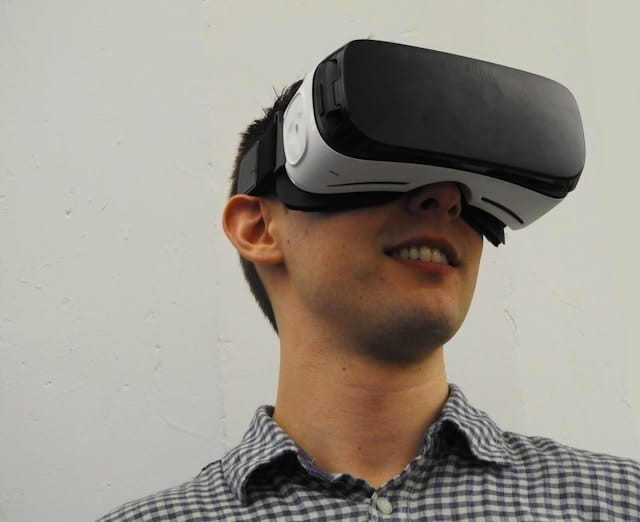Augmented reality for enhancing museum experiences

Welcome to the era of the digital revolution. A time when the fusion of technology and creativity has yielded tremendous innovations. The use of augmented reality in museums is one such innovation that has transformed the visitor experience. By utilizing augmented reality, museums now offer a more immersive, interactive, and educational visit. It’s no longer just about looking at exhibits behind a glass display; it’s now about stepping into the exhibit and being part of the art, history, or science that it represents.
The Intersection of Technology and Art
In the past years, the traditional museum visit included physical observation of art pieces, sculptures, and historical artifacts. However, with the emergence of technology such as augmented reality, this reality has significantly changed.
Cela peut vous intéresser : How are AI-powered drones assisting in disaster response?
Augmented reality (AR) in museums is a game-changer, enabling visitors to engage with exhibits in a whole new way. This technology overlays digital content onto the real world, providing additional information and interactive experiences. Imagine pointing your smartphone at a painting and seeing the artist’s process, or bringing a dinosaur skeleton to life right before your eyes. Amazing, right? Museums around the world are adopting this technology to enhance visitor experiences and promote learning.
Augmented Reality: The New Lens for Museum Visitors
AR represents a new lens through which visitors can experience museums. This technology enhances understanding by offering a depth of content that isn’t possible with traditional exhibits. For example, AR can bring a historical battle scene to life, allowing visitors to experience the event as if they were actually there. It also provides an interactive platform for learning, making it more engaging for children and adults alike.
A voir aussi : The impact of AI in predicting and preventing disease outbreaks
MDPI and CrossRef are excellent sources of metadata information related to AR technology. By using AR apps on their smartphones, visitors can access this additional layer of information, such as extra facts about an exhibit or artist, or even a 3D model of a historical artifact.
The Role of Google in Enhancing Augmented Reality Experiences
Google has played a significant role in advancing AR technology, with tools like Google ARCore and Google Lens. Google ARCore allows developers to build augmented reality apps for Android, while Google Lens lets users search what they see, providing relevant information about objects, landmarks, and art pieces.
These tools are incredibly useful in a museum setting. For example, Google Lens can recognize a painting and provide additional information about the artist, the period during which it was painted, and its significance. This enriches the visitor’s experience and understanding of the art piece, making their visit more worthwhile.
Museums and the Digital Immersive Experience
Creating a digital immersive experience is another incredible advantage of using augmented reality in museums. This technology can transport visitors to different times and places, giving them a fully immersive, 360-degree view of an exhibit or event. Imagine witnessing the building of the pyramids or walking through an ancient Roman marketplace.
An immersive experience is not just visually impressive; it also engages other senses, making learning more memorable. For instance, a virtual reality headset can simulate the sounds, smells, and even the temperature of a specific era or location. This stimulates the visitors’ imagination and allows them to connect with the content on a deeper level.
In conclusion, the use of augmented reality in museums has significantly enhanced visitor experiences. It has transformed the way we engage with art, history, and science, making learning more interactive, immersive, and enjoyable. This is the future of museum visits, a future where technology and creativity intersect to create unforgettable experiences. With continued advancements in AR technology, the possibilities are endless.
AR in Preservation of Cultural Heritage
The role of augmented reality in preserving cultural heritage cannot be overstated. Museums, by their very nature, are custodians of our cultural heritage. They hold objects and artifacts that tell the story of our past. However, these items are often fragile and vulnerable to damage or deterioration over time. Augmented reality offers a solution to this challenge by allowing museums to create virtual replicas of these objects, preserving them for future generations.
The National Museum in some countries, for instance, have used AR to create virtual replicas of historical artifacts, making them accessible to a wider audience without the risk of damage. This way, even if the actual artifact deteriorates over time, the virtual replica will always be available for visitors to interact with and learn from.
Apart from preserving physical objects, AR also plays a crucial role in preserving intangible cultural heritage. This includes traditions, folklore, music, and dance, among others. Through mixed reality, museums can recreate these experiences, allowing visitors to immerse themselves in different cultures and traditions.
For instance, a museum could use AR to recreate a traditional dance, complete with authentic music, costumes, and surroundings. Visitors could then virtually participate in the dance, learning the steps and movements, and experiencing the music and atmosphere as if they were actually there.
Utilizing AR in Museum Case Studies
Case studies have become an important tool for understanding the impact and effectiveness of AR in enhancing the museum experience. Researchers use Google Scholar and Scholar Crossref to access and review scientific articles, preprints, and open-access publications related to AR applications.
For instance, a case study on the use of AR in the Natural History Museum revealed that visitors who used AR had a more engaging and memorable experience compared to those who didn’t. The study found that AR stimulated curiosity and encouraged visitors to explore more of the museum.
Additionally, the study noted that AR helped to facilitate learning. By bringing exhibits to life and providing additional information, AR made learning more interactive and fun. This is particularly beneficial for children, who often learn best when they can interact with what they’re learning.
In another case study, researchers found that AR significantly enhanced the user experience in a reality museum. By providing a new layer of interactivity, AR transformed the museum visit from a passive activity into an active, immersive experience.
In conclusion, AR is revolutionizing the museum experience. This technology has not only made learning more engaging and interactive but has also played a crucial role in preserving our cultural heritage. With continued advancements in AR, the future of museums looks bright and exciting. We are undoubtedly in an era where the fusion of technology and creativity is enhancing the way we interact with and understand our history, art, and culture.
